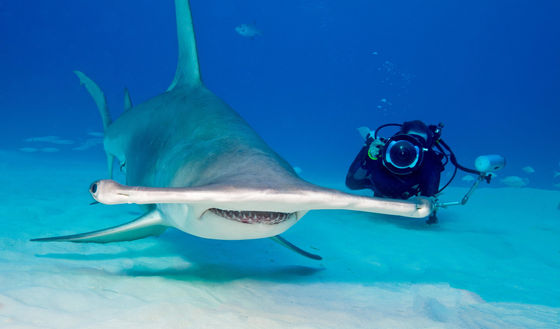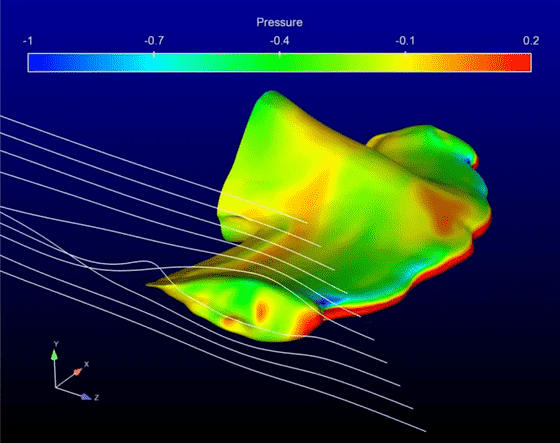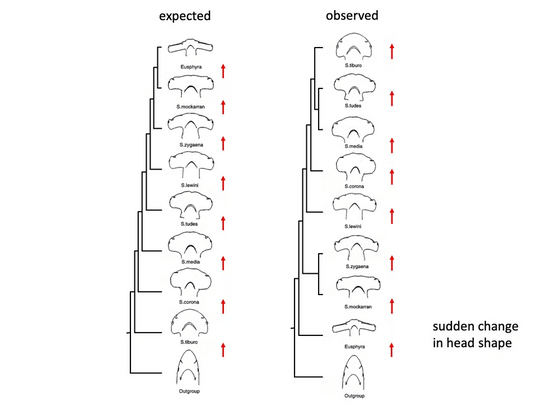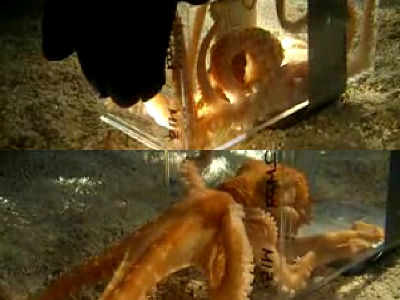Why does the hammerhead shark have a head that looks like a hammerhead?

by
Hammerhead sharks , which have a characteristic head shape with eyes jutting out to the left and right, are named after the T-shaped Buddhist implement that rings the bell, the shumoku (hammerhead). It is called 'Hammerhead shark'. A shark expert explains the strange head shape of a hammerhead shark that you can't forget at first sight.
Why do hammerhead sharks have hammer-shaped heads?
https://theconversation.com/why-do-hammerhead-sharks-have-hammer-shaped-heads-184372
According to Gavin Naylor of the University of Florida Florida Museum of Natural History, who has been studying sharks for over 30 years, the shape of the hammerhead shark's head is believed to have three main advantages.
The first is securing the field of view. Since the hammerhead shark has both eyes facing left and right, it is possible to fit a very wide range in the field of vision. However, the fact that the left and right eyes are facing in different directions also means that distance cannot be measured using parallax.

by
To compensate for this disadvantage, the hammerhead shark has a special sensor called the Lorenzini organ on the underside of its head, which detects weak electricity and can find and eat prey under the sand on the seabed. increase.
The organ of Lorenchini is present in sharks other than hammerhead sharks, but the organ of Lorenchini is particularly developed in hammerhead sharks. Hammerhead sharks also have Lorenzini organs on their heads, which allow them to locate their prey more accurately than ordinary sharks. This is the second merit of the distinctive head.
As a third benefit, scientists believe the hammerhead's large, flattened head shape may help it change direction quickly in the water. There is also research that suggests that it may be used to obtain lift like an airplane wing.

by
So far, nine species of hammerhead sharks have been found, each with a wide variety of head shapes and sizes. For example, there are hammerhead sharks, such as the Indian hammerhead shark , whose head is half as wide as their entire length, and the bonnethead shark , whose eyes do not protrude so much to the left and right, so its head looks more like a shovel or a scoop than a hammer. There is also a hammerhead shark playing.
Until now, scientists believed that hammerhead sharks acquired such a distinctive and diverse head shape because their heads gradually elongated from side to side over time. . Adopting this theory, first of all, there is an ancestor of the hammerhead shark, which has the same head shape as a normal shark, and the hammerhead shark that evolved from there has a head that extends to the left and right. However, the bones of sharks are all cartilage and almost no fossil remains except for teeth, so it is extremely difficult to see the fossils of the ancestors of hammerhead sharks.
Therefore, a research team at the University of Colorado and the University of Florida analyzed DNA collected from eight species of hammerhead sharks to explore the genetic relationships of each hammerhead shark. The results were completely different from what we had originally expected: the older the species, the larger the head in relation to its body, and the smaller the head, while the younger the species.

These results lead hammerhead shark researchers to conclude that the hammerhead shark's head is not a product of natural selection, which slowly changes in response to changes in the environment, but rather an abnormally shaped head caused by a genetic defect that allows it to survive by chance. I came to think that it worked to my advantage and was passed down to my descendants.
Related Posts:







